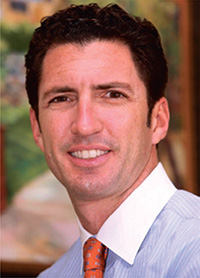By Dr. Aaron Williams, DC
Dr. Aaron Williams, DC is a graduate of Life University and vice president of the North Carolina Chiropractic Association central district.
Many people with neck pain, tingling down the arms, low back pain and pain going down the leg into the foot often receive the diagnosis of Degenerative Disc Disease, as common condition highly misunderstood.
Patients commonly leave the doctor’s office with unanswered questions like:
• What is Degenerative Disc Disease and how did I get it?
• Will it spread or get worse?
• Is surgery inevitable?
• What can I do about it without surgery?
The word “disease”, in this case, is a misnomer. Disease implies a progressive condition that spreads throughout the spine. This is not the case. Degenerative disc disease comes from abnormal wear and tear. The soft tissue between the spinal bones or vertebrae are like cushions. They have a watery substance, similar to jelly, in the middle which keeps the discs hydrated and full which serves as a shock absorber.
How do these discs get water? It must come from the surrounding tissues. When each joint in the spine moves normally, it creates a pumping action. Water goes into the disc, bringing nutrition; water is pumped out, carrying waste products.
A hydrated, full disc helps to keep space between the joints which is very important because that space provides a hole where spinal nerves exit from the spinal cord. These nerves, which control your bodily functions, also go down your arms and legs. When a joint in the spine stops moving normally due to bad posture, falls or traumas, the pumping mechanism stops.
Without this mechanism, the disc does not get water and starts to dehydrate. This dehydration, over time, causes the disc to decay further. The spinal vertebrae start to get closer together as the disc gets thinner which makes the hole where the nerves exit the spine smaller, pressing against a sensitive nerve which can be VERY painful. This may even cause tingling down the arms or pain down the legs (sciatica). As the joint gets closer to bone-on-bone, spurs start to develop osteoarthritis.
There are several phases of this degenerative process. If the problem is left uncorrected, the spine continues through the next phase.
• Phase 1 involves restricted movement in a spinal joint and a loss of normal, healthy curves in the neck and back, which act as springs to distribute the weight evenly throughout the spine. When the curve is lost, it puts extra pressure on the spinal joints, discs, and nerves.
• Phase 2 occurs when phase 1 is uncorrected. The discs continue to thin and decay, bone spurs start to develop and muscles become fibrous, turning into scar tissue from ongoing strain.
• Phase 3 occurs after years of neglect. The range of motion is severely limited, the joints are bone-on-bone and the nerves are damaged. The scar tissue is even more extensive.
Degenerative Disc Disease does NOT have to get to Phase 3. If the movement of the joints is restored, the water pumping mechanism keeps the disc hydrated; a proper spinal curve helps to balance and share the weight throughout the spine. Non-Surgical Spinal decompression creates a negative pressure in your disc; the negative pressure helps fluid and nutrition to return which decreases the wear and tear of gravity.
This proven, non-surgical approach could help you find the pain relief you need by relieving pain in the lower back, sciatica, and neck pain. Many have avoided surgery altogether through spinal decompression!
But what about the muscles that have scar tissue? These are treated with laser therapy. Our office has the latest in Non-surgical Class IV laser therapy, called Lasera, unique to our office. Laser treatments, which are pain-free and effective, rush oxygenated blood into the issue. The benefits of Lasera therapy include pain relief, accelerated tissue repair and cell growth, reduced fibrous tissue formation and anti-inflammation.


